NYC’s Forgotten ‘War on Christmas Trees’
Discover how an obscure holiday crackdown affects festive street vendors today!


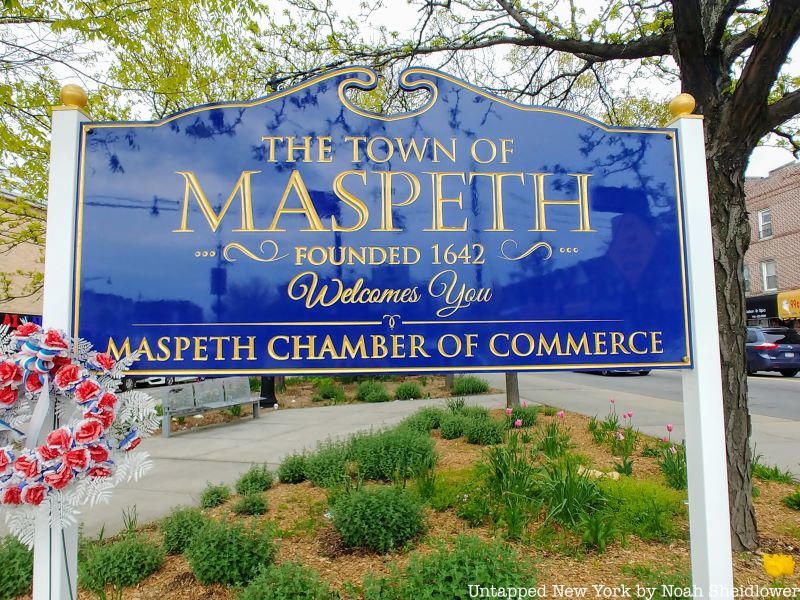
Maspeth is a residential community in Queens that few people outside of Queens or Brooklyn know about. Bordered by communities like Woodside, Sunnyside, Ridgewood, and Greenpoint, Maspeth is a rather large neighborhood with plenty of odd secrets.
Maspeth was founded in the early 17th century by Dutch settlers, who clashed with Mespeatches Indians who lived in the area. The name Maspeth is derived from their word for “overflowed by the tide,” referencing the many swamps in the area. The area was later called Middleburg, founded by Newtown Creek. Many roads were repaved after the Revolutionary War with oyster shells and wooden planks, and sections of the area were named Melvina and Columbusville. Maspeth attracted many immigrants from Poland and neighboring countries, including a population of Boyash Romani from Romania and Hungary.
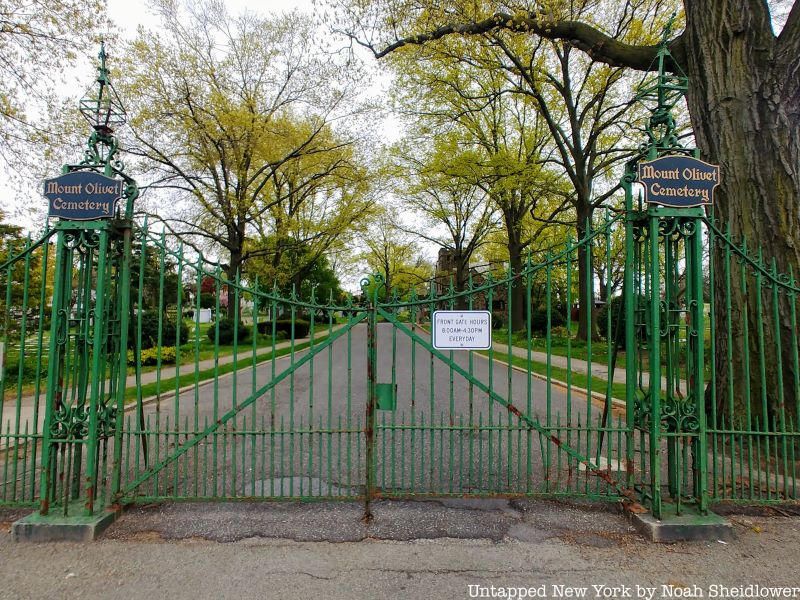
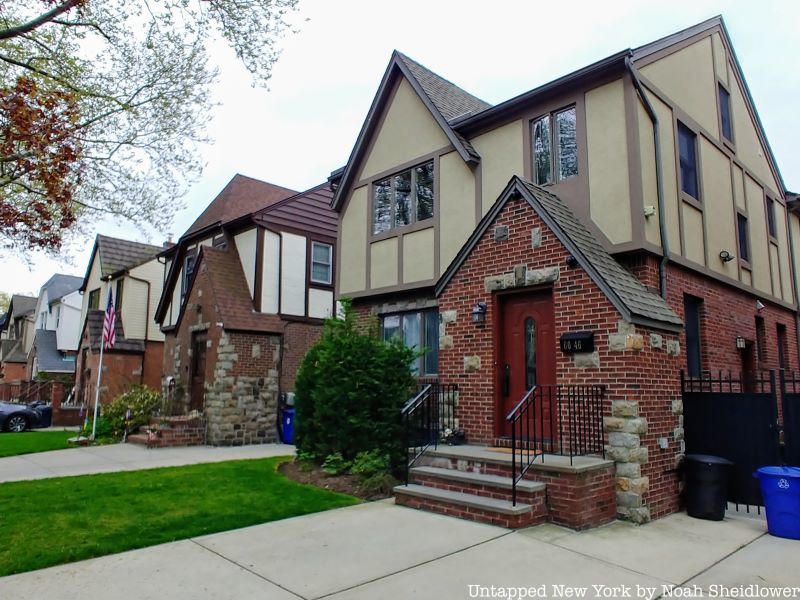
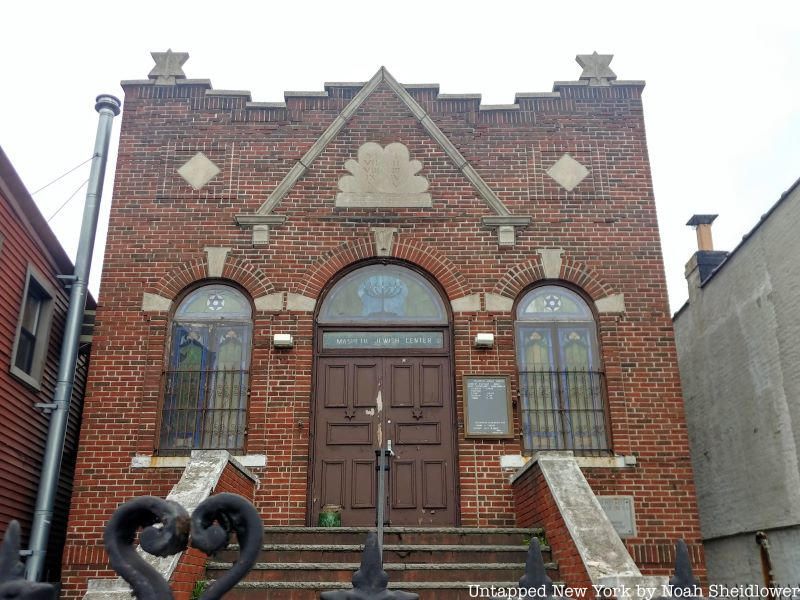
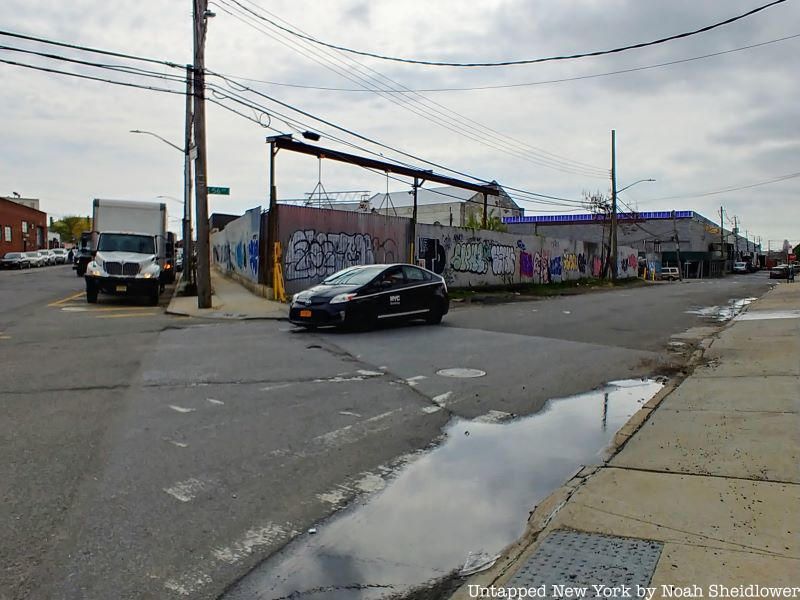
Today, much of this history still remains, especially around Newtown Creek. Hagstrom Maps, a best-selling brand of road maps, were produced extensively in Maspeth. The Tudor-style Nassau Heights Homes date back to the 1930s. There are abandoned sites like a baseball stadium amid construction and industrial sites. And there are street names that pay homage to the neighborhood’s past, including Melvina Place and Plank Road. Though, Maspeth’s secrets are even more surprising and odd, such as the smallest park in New York City, unexpected film locations, many historically rich cemeteries, and a secret German spy ring. Here are the top 15 secrets of Maspeth!
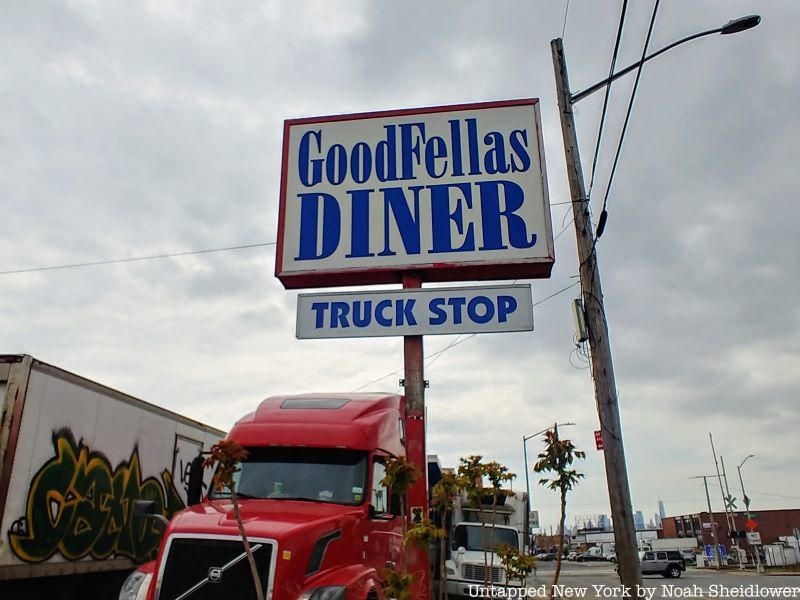
At the corner of Maspeth Avenue and Rust Street in an industrial area of Maspeth was the Goodfellas Diner, which has been closed since 2018 following a massive fire. Originally the Clinton Diner, Goodfellas Diner was renamed after the release of the 1990 film. Two scenes from the movie were shot at the diner, both featuring Robert De Niro and Ray Liotta. The scenes take place at a booth and the parking lot, the latter of which is where De Niro’s character discovers Tommy DeVito (Joe Pesci) was killed. The diner has also been featured in over 20 films and 30 television shows including The Good Wife, The Americans, and Master of None.
A fire in June 2018 destroyed much of the diner, which was converted from a former truck stop. The diner was with the Diamantis family from the mid-1980s until it closed after the fire. The diner was unable to recover from the damages, though the structure still stands today, with a crowded parking lot of abandoned trucks and other vehicles, and many still make the trek out to the diner to see the historic film site.
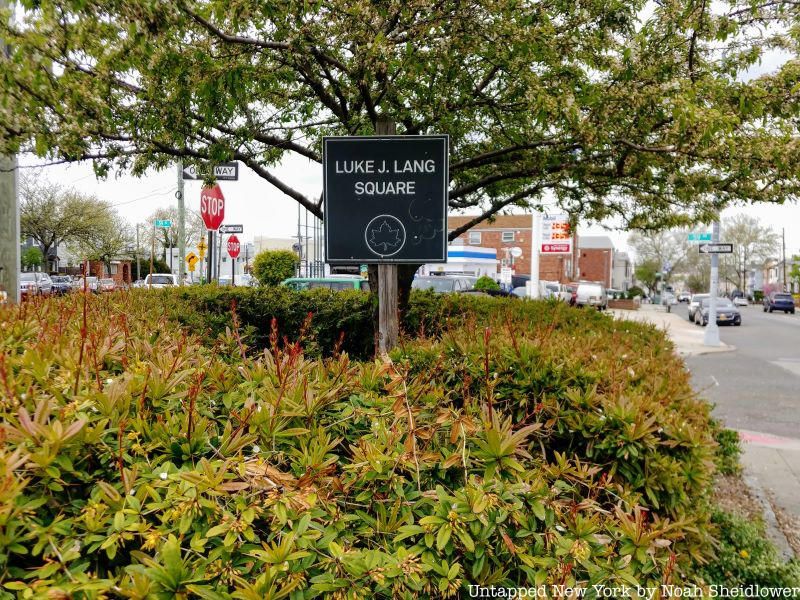
Luke J. Lang Square is considered the smallest park in New York City, according to Curbed. The square measures less than 1/1,000 of an acre and consists of just a tree, a plaque, and a few shrubs. The park honors Luke J. Lang, a soldier who died in World War I and lived in nearby Ridgewood before working as a printer for J.E. Hetsch on Duane Street. The land was originally owned by Alden Sampson & Son and was acquired by the City in 1916.
The park was named for the soldier in 1933 and was renovated in 1935 and 1936. The square included blue-stone sidewalks and a flagpole with seats, where people could take in views of three Norway maples. Bounded by Fresh Pond Road, 61st Street, and 59th Road, the park underwent sidewalk and site renovations in 2000, amounting to $13,353.
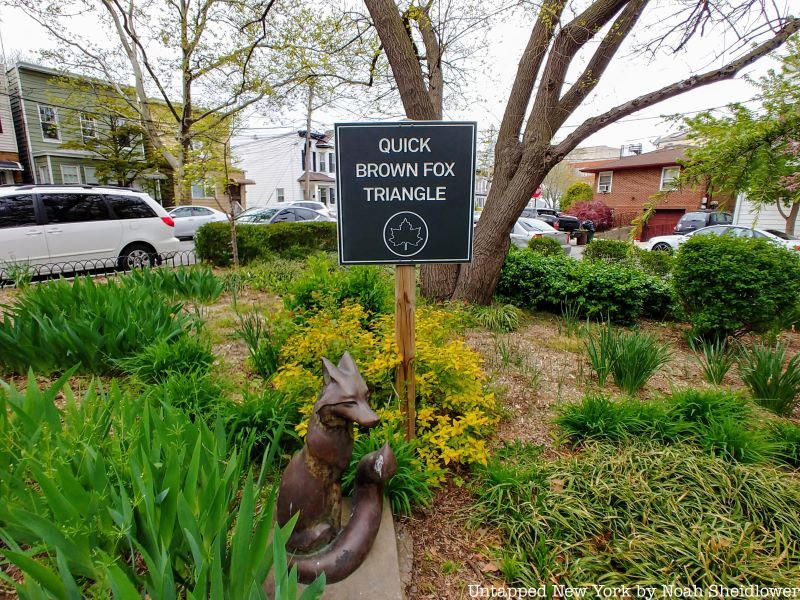
Not many people, even Maspeth residents, know about Quick Brown Fox Triangle, a quaint triangle tucked behind a wall of the Long Island Expressway. But the park, which fittingly features a statue of a brown fox by the sign, takes its name from the famous sentence “The quick brown fox jumps over the lazy dog.” The sentence features every letter of the alphabet, making it a pangram, and it is used commonly to demonstrate types of fonts.
The City acquired the property in 1953 during the construction of the Long Island Expressway, and NYC Parks gained control in 1957. A $600,000 contribution from Council Member Karen Koslowitz in May 2001 allowed for the triangle’s reconstruction with shaded benches and trees.
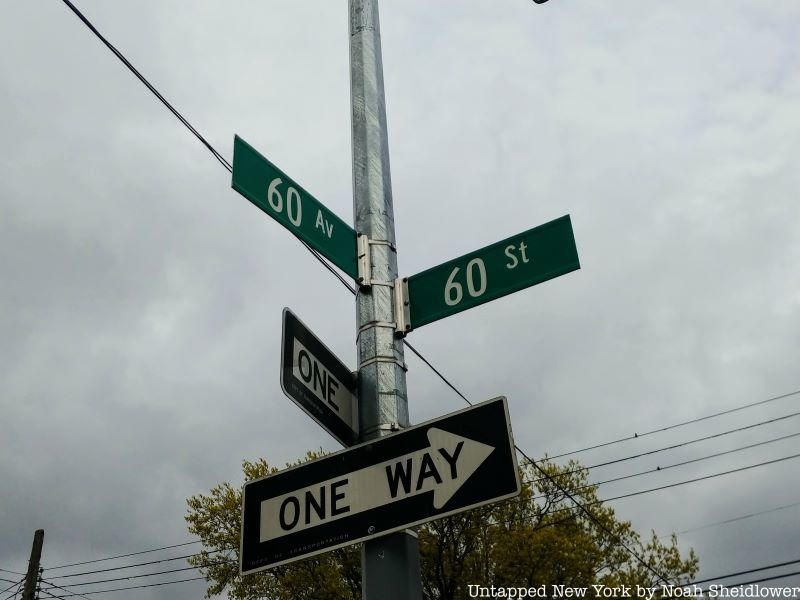
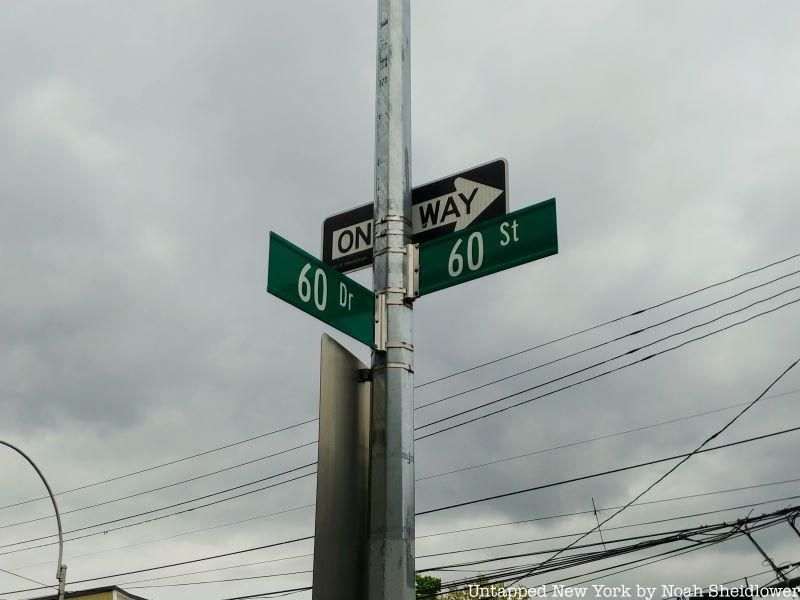
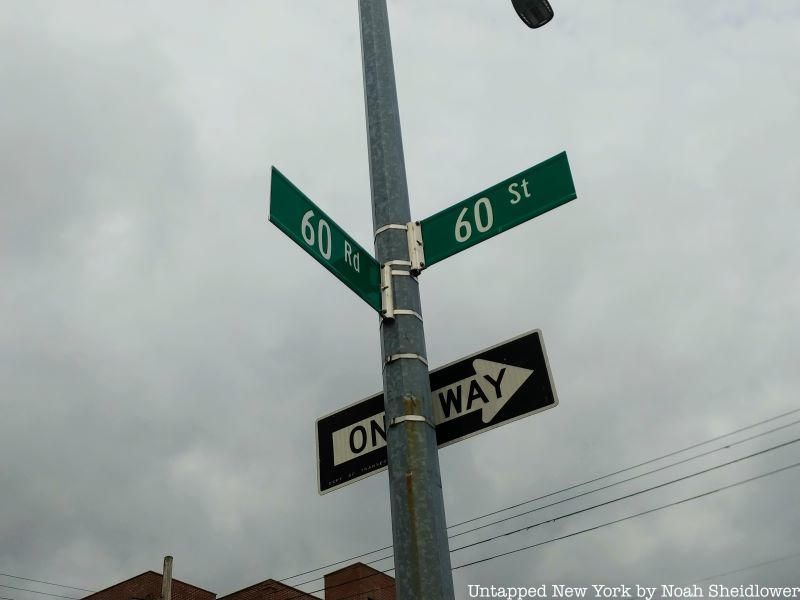
Some New Yorkers have probably been confused by the numerous Broadways throughout the five boroughs; there’s the main Broadway in Manhattan, but there is also one in Brooklyn, two in Queens, and one in Staten Island. But, Maspeth’s street names are way, way more confusing. In Maspeth, there are seven roadways named “60,” including 60th Street, 60th Road, 60th Avenue, 60th Drive, 60th Lane, 60th Place, and 60th Court. There are other instances of this repetition, including 69th Street, 69th Place, and 69th Lane all off Grand Avenue. This makes navigating parts of Maspeth quite difficult, albeit amusing.
Before the consolidation of New York City in 1898, Queens was divided into independent communities with their own numbering systems for street names. Though, in the early 1900s, officials established a grid system that imposed new streets on the already existing grid. Because, for instance, multiple roadways needed to go between 68th Street and 70th Street, variations of “69” were added to create some semblance of order. This also explains why there are seven “60” roadways, especially because the grid is not completely rectangular as it is for much of Manhattan.
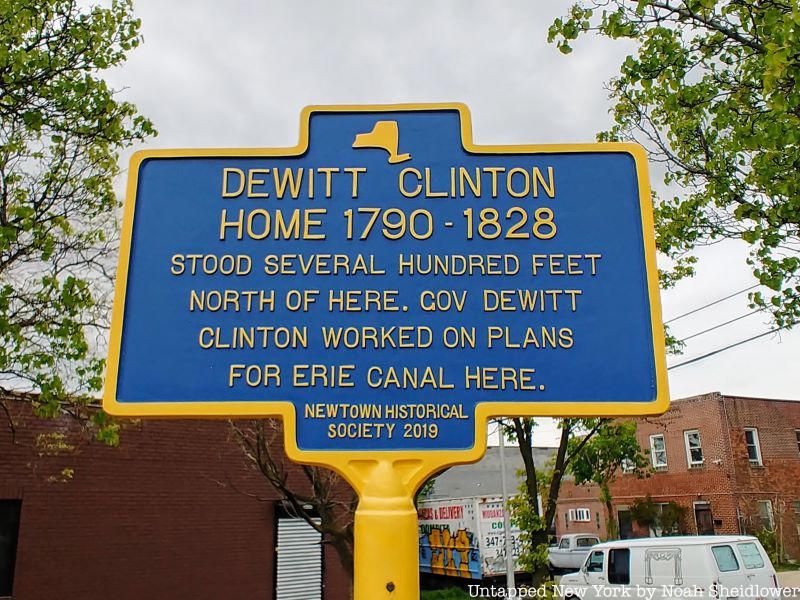
DeWitt Clinton was a former governor of New York, senator from New York, and mayor of New York City who was largely responsible for constructing the Erie Canal. He was the nephew of two-term vice president and New York governor George Clinton. DeWitt Clinton used to live in a mansion at what is today near Maspeth Avenue and 56th Terrace, which is denoted by a historic marker today. He owned the home from around 1790 until his death in 1828. The site was originally a small hill that housed the Joseph Sackett Estate, which was then transferred to a wealthy merchant, then a veteran of the French and Indian War, then DeWitt Clinton.
Clinton planned the Erie Canal while in the Maspeth home, and he also proposed a canal from Flushing Bay in Queens to Wallabout Bay in Brooklyn. Clinton and his wife Maria inherited the mansion from Walter Franklin, and it stood until 1933, when it burned down after years of disrepair. The historic marker where the home stood was put up in 2019, though supposedly one existed in the 1930s, but disappeared when roads were widened in Maspeth.
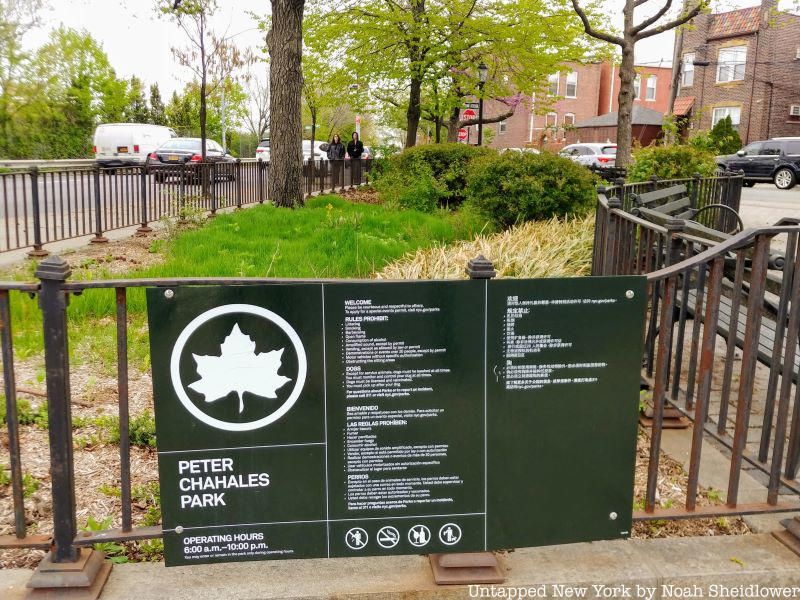
Peter Chanhales Park, located a short walk off Grand Avenue, was a spot where horsecars would stop on their journeys through Maspeth’s streets before automobiles were invented. Horsecars became popular with the construction of the New York and Harlem Rail Road in 1832, and the first horsecars carried about 30 people per trip. What was then Brooklyn did not create a horse-drawn railway system until the 1850s, and in 1860, the Grand Street and Newtown Railroad laid down a double-track railroad.
For three cents a ride, passengers could board the Grand Street line, whose cars were painted bright yellow, to Calvary Cemetery. In 1870, the line introduced “owl services,” or all-night cars, for evening employees, though it only was offered for a year before being reintroduced in 1881. The Grand Street line was popular since it was more reliable and cheaper than the Long Island Rail Road, later becoming a feeder to the Manhattan Beach Rail Road. By the 1880s, horsecars were transporting nearly 8,000 people a day throughout Queens and Brooklyn. All cars stopped at Maspeth after the opening of the Maspeth Depot, though in 1888, most Brooklyn lines became part of the Brooklyn City Rail Road.
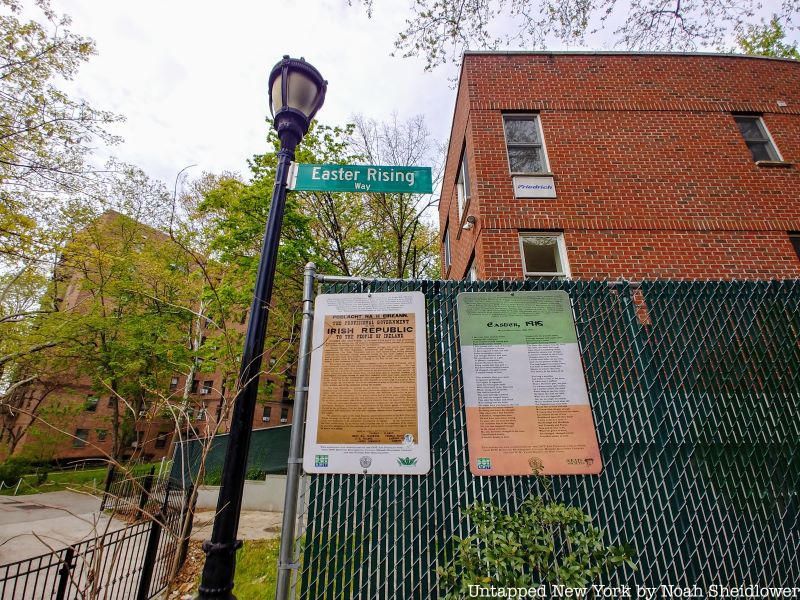
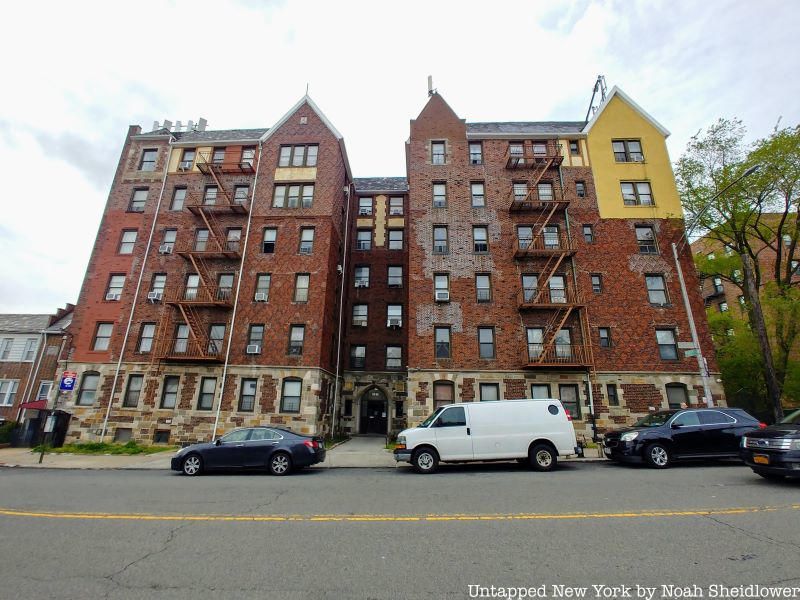
On one of Queens’ only step streets, used solely for pedestrian traffic, the Maspeth community marked the centenary of the Easter Rising by giving the often used walkway a name. Running along 53rd Avenue from 65th Place to 64th Street, Easter Rising Way was named in 2016 in the traditionally Irish part of Queens to commemorate the armed insurrection against the British government in Ireland. The name was proposed by Congress member Elizabeth Crowley, a Queens representative with Irish ancestry. The Proclamation of the Irish Republic, according to Crowley, had similar themes to the U.S. Declaration of Independence, going further by acknowledging the rights of both “Irishmen and Irishwomen.”
Sinn Féin president Gerry Adams gave the keynote address at the naming ceremony. “Easter Rising Way will remind us of the struggle for equality, the progress we have made and injustices that are real here and abroad,” Crowley said to the crowd. “We must continue to carry these values in our hearts and in our actions. And the transformation and name change of this staircase is symbolic of that struggle.” The step street is located just a few blocks from Calvary Cemetery, which has for decades been an important location for Irish monuments and respected burial sites.
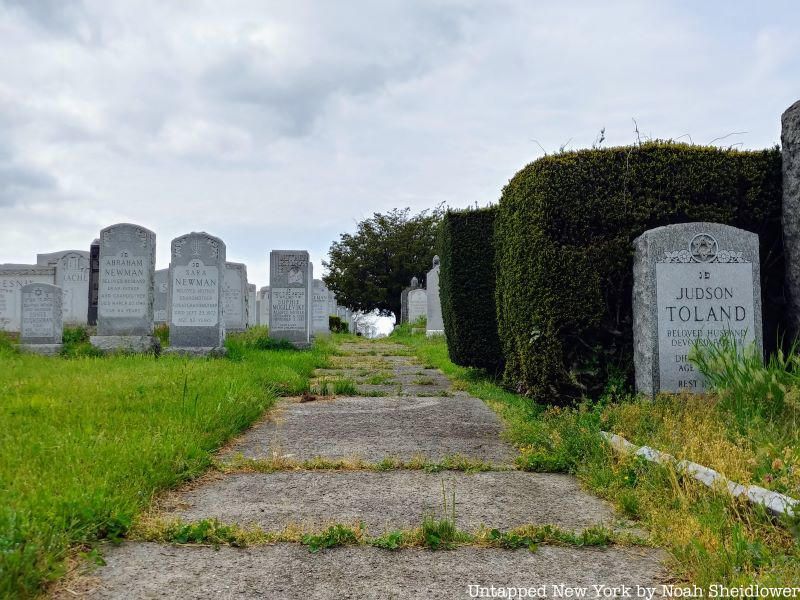
Mount Zion Cemetery is a large Jewish cemetery in Maspeth with about 210,000 burials on 78 acres. The first burial was in 1893, and many notable Jewish New Yorkers are buried there, including author Nathanael West, composer of “Hatikvah” Naftali Herz Imber, and many congressmen and lawyers. The cemetery was established during the massive influx of immigration from Eastern Europe in the late 1800s.
One of the most notable architectural features of Mount Zion is a monument to those who died in the Triangle Shirtwaist Factory Fire of 1911. The fire, which is one of the deadliest industrial accidents in the history of New York City, took the lives of 147 garment workers in a factory in Chelsea. The disaster drove the push for legislative action to improve workers’ conditions during the Industrial Revolution.
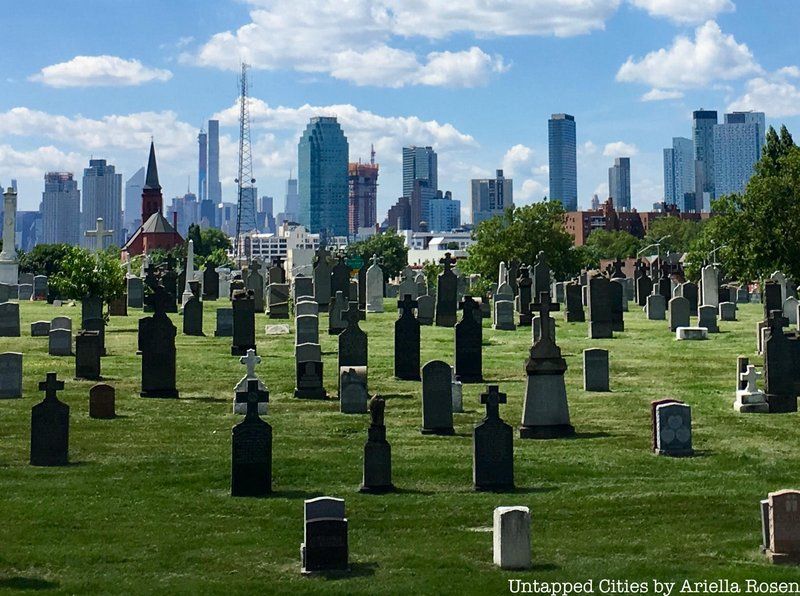
Spanning 365 acres across Maspeth and Woodside, Calvary Cemetery is home to over three million burials since opening in 1848. Calvary Cemetery is comprised of four major sections: the First (Old), Second, Third, and Fourth Divisions. These are formally known as the Divisions of St. Callixtus, St. Agnes, St. Sebastian, and St. Domitilla. These names correspond to the 40 or so ancient Roman catacombs, some of which date back to the second century. Because of Roman land shortages, these catacombs were used by early Jews and Christians to bury their dead.
St. Calixtus was a pope from 217-222 who was martyred by the Romans by being thrown down a well. The Catacombs of St. Callixtus in Rome house 3rd-century popes and the crypt of St. Cecilia. St. Agnes, acquired in 1888, is named after a catacomb where the Roman martyr St. Agnes was buried, gaining the attention of Emperor Constantine. St. Sebastian was established in 1879 and takes its name from the Roman catacombs where people would venerate the Apostles Peter and Paul. And St. Domitilla, established in 1900, was named for Flavia Domitilla, who was exiled because of her Christian sympathies, helping fund the largest Christian underground cemetery in Rome.
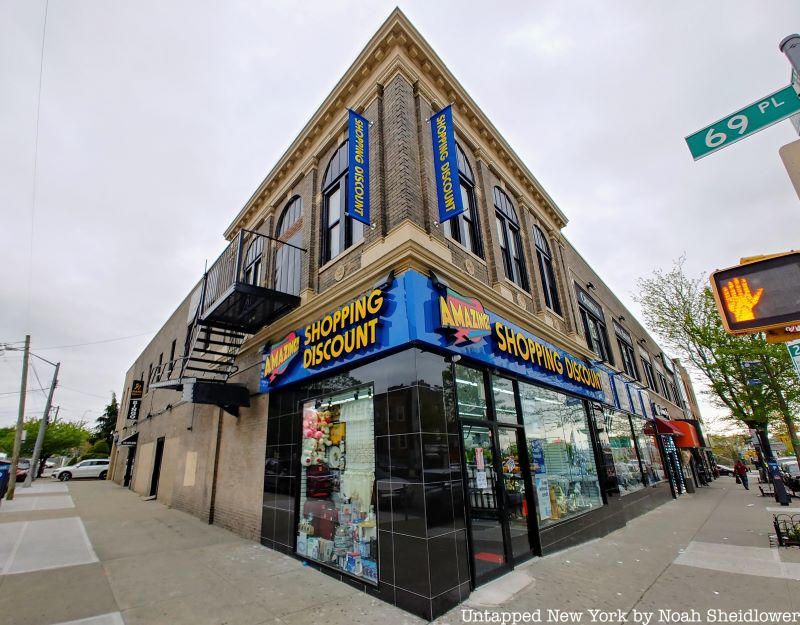
The Maspeth Theater was located at Grand Avenue and 69th Place and was built in 1924. The 1,200-seat theater showed movies until 1965, after which the lobby was adapted for retail use. The auditorium was converted into a bingo hall, signs for which can be seen from the street. It was built by Straus and Strausberg, and it went bankrupt in 1929 after the Wall Street crash, after which Metropolitan Playhouse took it over.
The Ridgewood Flushing trolley car line allowed people from across the city to see performances and the latest movies. The theater is perhaps most notable for helping launch Judy Garland‘s career — Garland performed at the theater perhaps before playing the role of Dorothy in The Wizard of Oz. She also made an appearance when doing a promotional tour for “Gay Purr-ee” in 1962.
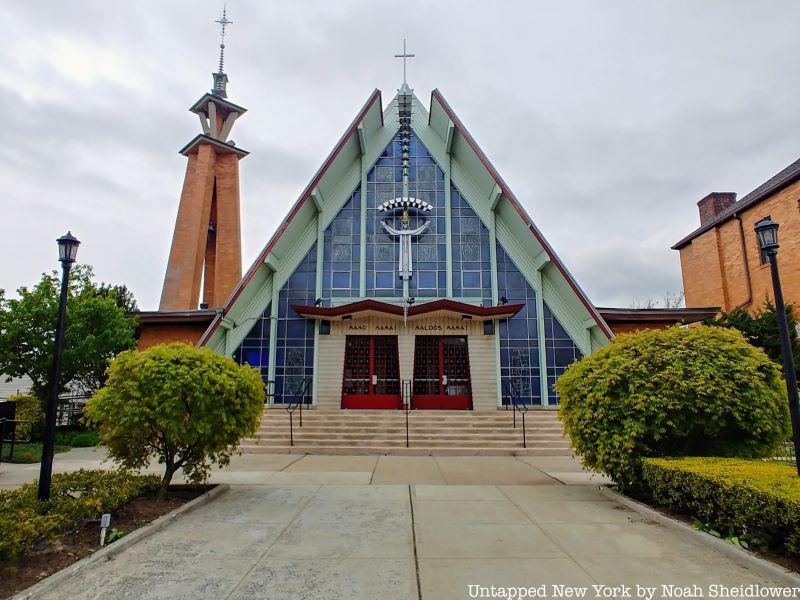
Transfiguration Roman Catholic Church on Clinton Avenue in Maspeth was established as a Lithuanian parish in 1908. The church originally served the large Lithuanian population in Maspeth and nearby Blissville. A new church structure was built in 1935, though the current modern building was erected in 1962. The current structure features many elements of Lithuanian folk art, including the phrase “Mano Namai Maldos Namai,” or “My house is a house of prayer,” above the central doors.
The building is triangular with dark blue windows, light green supports, and a statue of Christ. In the courtyard of the church sits a replica of a Lithuanian roadside shrine. The shrine, which resembles those found in Lithuania, also resembles a steeple in the main building. A mass is still held in Lithuanian usually once a month.
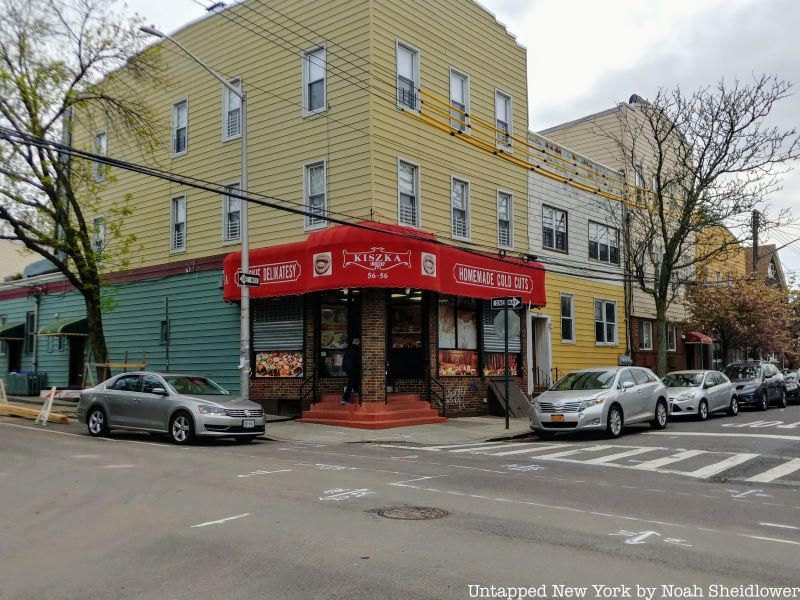
Though just a few blocks, Maspeth, like Greenpoint on the other side of Newtown Creek, has a notable Polish community. The first Polish settlers arrived in the late 1880s, though there was a small community in the area even before who attended Saint Mary’s Church. Holy Cross Parish, the second Polish church in Maspeth, opened in 1912, and many Poles moved to Hull Avenue, Clermont Avenue, Clinton Avenue, and Perry Avenue. Many Polish immigrants, primarily single workers, moved in with families in two- or three-family apartments. Early on, many immigrants opened small shops to make a stable income.
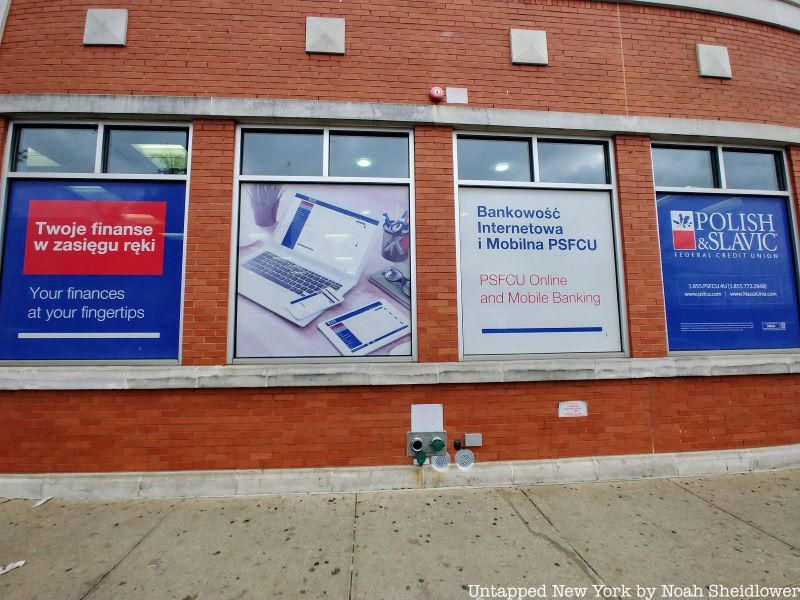
The parish was the center of Polish life in Maspeth, and a school was established at the parish, followed by an athletic club and choral society. Polish National Hall on 56th Road hosted monthly meetings of organizations including the Polish National Alliance. Many immigrants worked on the remaining farms in the area, while others worked at cemeteries and factories, including Downey Iron Works and the Hughes Pottery Company. Others opened up funeral homes, grocery stores, clothing shops, and music stores. Today, just a few Polish shops and businesses remain, including Grosik restaurant, Krakus Polish Deli, and San Cafe.
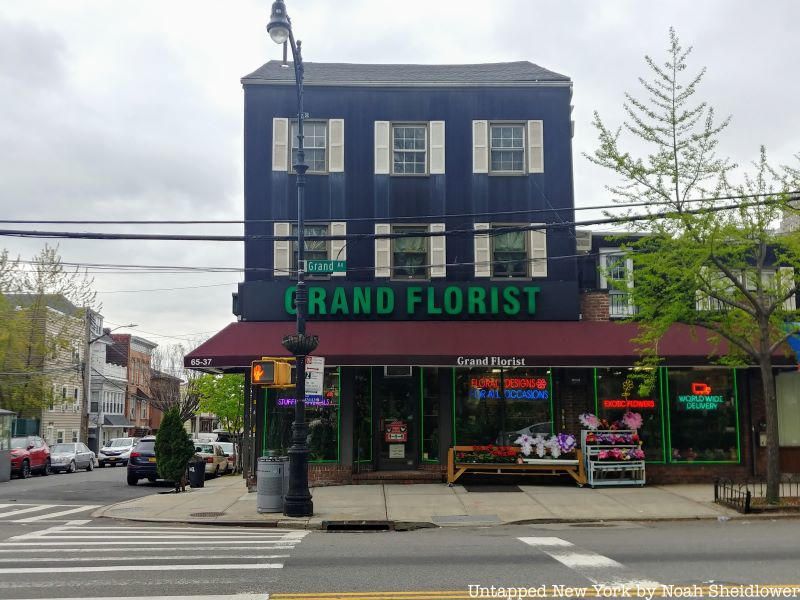
The building now housing Grand Florist, located at Grand Avenue and Remsen Place, was once the Queens County Hotel. The hotel was built in 1851 along Grand Street, which at the time was a colonial road traversed by horsecars. The hotel was popular among farmers and tradesmen, who stopped for the night when transporting goods between Williamsburg and Queens. The florist inhabits the still-standing hotel, a three-story black structure right across the street from Mount Olivet Cemetery.
Farmers who stayed at the Queens County Hotel also stopped by Anton Fausner’s wheelwright and wagonmaker’s shop, which was located just south of the LIE. The shop was torn down in 2006 and later replaced by a bank. Later in the hotel’s history, visitors would shop at Wielback’s Grocery, a famous Maspeth supermarket.
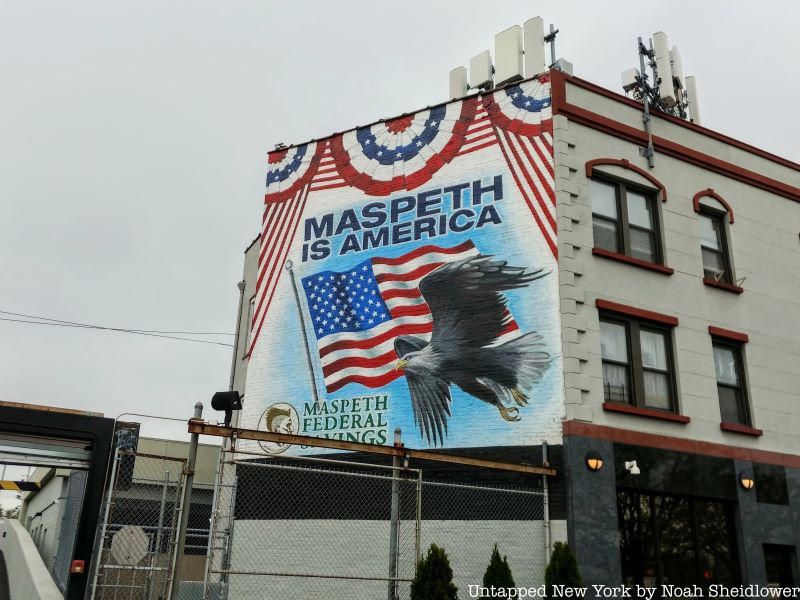
On the Queens-Brooklyn border, a German spy ring called “Joe K” operated in the leadup to World War II. It was led by Kurt Frederick Ludwig, and one of the co-conspirators included Lucy Boehmler, a Maspeth resident who had recently graduated from Grover Cleveland High School. The spy ring transmitted to Germany “documents, writings, sketches, photographs, negatives, plans, maps, notes and other information concerning the national defense.” Boehmler was Ludwig’s secretary while attending business school.
Boehmler had the nickname “The Maspeth Mata Hari” for using her innocence and sweet-talk to learn secrets. Boehmler testified against her co-conspirators, though all were convicted. Ludwig got 20 years in prison, while Boehmler received just five years. It is unknown exactly what happened to Boehmler and the other co-conspirators after they were released from prison, though many went on to live low-key lives, unlike later spies who were executed.

The Metropolitan Oval is a soccer complex in Maspeth with views of the Manhattan skyline. Often considered one of the best spots for soccer in the whole city, the Metropolitan Oval has played an important role in soccer history. The field was constructed in 1925 by German and Hungarian immigrants, who modeled it off a European-style field catering to men and boys of all backgrounds. Over the years, many players who made it to the U.S. National team played games at the Oval before reaching the major leagues.
Notably, in 1976, three-time world champions Club Nacional de Football in Uruguay played an exhibition match against Inter Giuliana, a soccer team based in New York City. The Uruguayan team defeated the New Yorkers 4-0. Though by the 1990s, the Oval was in need of major repairs, and the Metropolitan Oval Foundation was founded to restore the field. Nike and the U.S. Soccer Foundation both contributed $250,000 toward the construction of new lights and a FieldTurf field. The Met Oval Academy has helped launched many young players into minor and major soccer leagues.
Next, check out the Top 12 Secrets of Woodside!
Subscribe to our newsletter